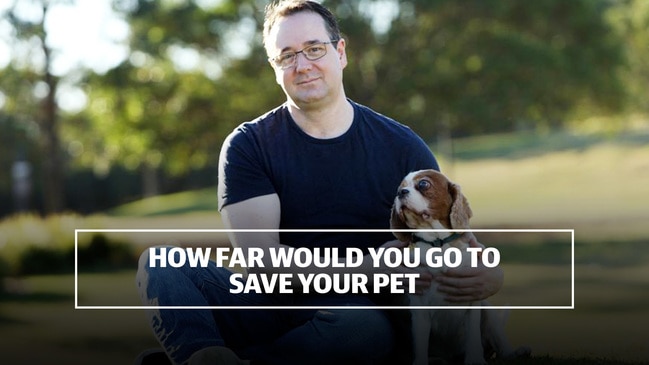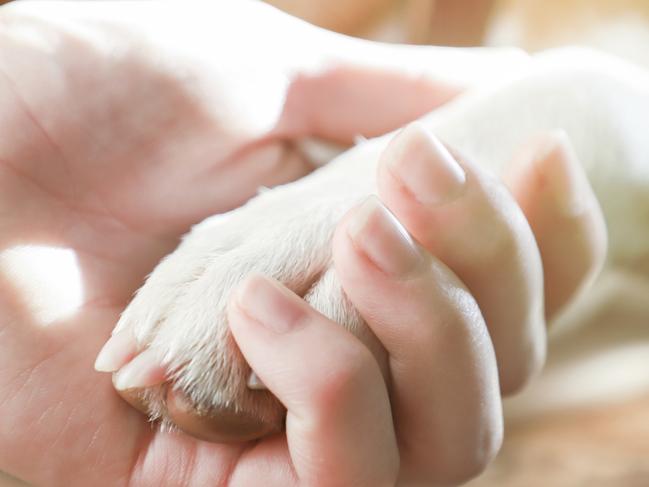With so many caveats and exclusions, is pet insurance worth it?
The spend on pet insurance is $500m a year and growing. Are we throwing that money away? We reveal the best and worst policies.

NSW
Don't miss out on the headlines from NSW. Followed categories will be added to My News.
Pet insurance is so hopeless the nation’s top consumer researchers say they can’t recommend any policy.
Australians are spending well over $500 million on insurance for their dogs and cats but unlike car and house insurance, there are so many caveats and exclusions it’s difficult for consumers to know what their pet is covered for until it’s too late.
In addition, the older the pet the higher the premium, prompting Choice to recommend instead of paying premiums pet owners put that cash into a savings account for the inevitable costly bills that come as pets get older.

Read more:
Would you pay $40k to save your pet’s life?
Why we’re spending more than ever keeping our pets alive
PetSure — owned by global insurance giant Holland and underwriter of 80 per cent of the market — estimated the industry’s annual takings from pet insurance premiums were $410 million and said it paid out $139 million in benefits last financial year.
A spokesperson for PetSure said of every $100 paid in premiums only $2 of that is profit.
Margins are volatile due to the small size of the industry but according to IbisWorld, there’s more profit in pet insurance compared with car or house insurance.
Across the pet insurance market, annual benefits are often capped at $10,000. But operations and vet bills for procedures like removing tumours can run to $30,000.
Premiums can cost up to $2000 a year, depending on the breed, location and age of the pet, according to Choice.
The average pet policy costs between $420 to $540 a year, compared with the average annual vet bill of $445 for cross breeds and $470 for purebred dogs revealed in PetSure’s Pet Health Monitor released this week.

Choice insurance expert Jodi Bird said pet insurance does not represent the same value as car or home insurance, which can cover the cost of replacing a home to the tune of hundreds of thousands of dollars.
“If you are trying to get value for money across all of your insurance, don’t get pet insurance,” Mr Bird said.
According to Choice, the annual median insurance prices for pets is $620, compared to $862 for comprehensive car insurance and $678 for home and contents insurance.
With car and house cover, exclusions are fewer than pet insurance and consumers can purchase a comparable amount of cover across a wide range of products.
“Pet insurance is not essential at all,” Mr Bird said.
Vet bills increase as pets age, so over their life you’re likely to accumulate enough to cover the costs.
A Cavoodle at two years old would cost $470 a year for comprehensive insurance but at seven years old that premium goes up to $697, the PetSure spokesperson said.
“If you nickname the bank account ‘Fido’s vet bills’, you’ll think twice before spending that money on a trip to Bali,” Mr Bird said.
Read more:
Pet food brand recalls: Are your animals at risk?
A vet’s guide to buying the safest pet food
But PetSure’s chief vet Magdoline Awad said the right pet insurance can save a pet’s life if the owner doesn’t have thousands of dollars spare for treatment.
“We don’t have a Medicare system that allows everybody to access medical care for their pets,” Ms Awad said.
“The concept will only hit people about how much veterinary care costs when they are in that situation at midnight and their dog has been hit by a car and it needs to be stabilised and it’s got a fracture and it’s critical and they are up for thousands of dollars in veterinary fees and they’ve got to make a decision,” she said.
“Unfortunately for most people that’s how they get to know how much veterinary fees are.”
Pet owners should keep in mind “somewhere along the line my dog might have an accident or have an illness”, Ms Awad said.

But vet bills regularly exceed the $10,000 annual payout limit, with the Pet Health Monitor revealing tumour removal and related treatment cost $31,000 for one dog while, another had $19,000 worth of treatment to remove a swallowed corn cob and the top cost for heatstroke treatment was $22,000.
Choice rated new entrant to the Australian market, Seattle-based Trupanion as the best of a bad bunch.
The consumer researchers found competition was sorely lacking but Mr Bird said Trupanion may change that.
“It’s encouraging that new competitors are identifying consumer problems with pet insurance and responding to that,” Mr Bird said.
Six out of every seven policies on the market are underwritten by Hollard, including Trupanion’s.
Asked to comment on Choice’s condemnation of the industry, Hollard’s chief governance, legal, culture and corporate affairs officer Jenny O’Neill said pet insurance gave consumers “the financial capacity to provide the best healthcare outcomes”.
Ms O’Neill said Choice’s ‘Fido’s vet bills’ account idea wouldn’t work.
“With the current near record-low savings rates in Australia, many people do not have access to ready funding for veterinary care that can often run into the thousands of dollars,” she said.
A pet owner saving $100 a month would need to have been saving for just over eight years to cover a $10,000 treatment bill if their dog is hit by a car, the Petsure spokesperson said.

Read more:
Comparison service Canstar’s group executive Steve Mickenbecker said pet insurance could be worth it.
“If you get a major event, having insurance is something that makes a difference between saving the pet or putting it down,” he said.
It wasn’t a good idea to have cover for routine things, Mr Mickenbecker said.
He also recommended taking out cover when the animal was young — before medical conditions developed. Insurers would exclude these if a policy was sought once they had emerged.
A 2016 report by Animal Medicines Australia found pet owners spent $490 million on insurance annually.
The report said the share of cats and dogs covered had grown by about half since 2013, which suggests the spend today would be well over $600 million.
The next AMA report is out later this year.
With its permission, News Corp today publishes details of the 10 lowest-scoring policies.
The best score Choice gave was 71 per cent, which is very low when compared to other products. Choice gave many policies less than 40 per cent.
Canstar, however, was able to give some policies its maximum five-star rating.
With Canstar’s permission, News Corp today publishes all the top-scoring policies for a typical two-to three-year-old dog.


